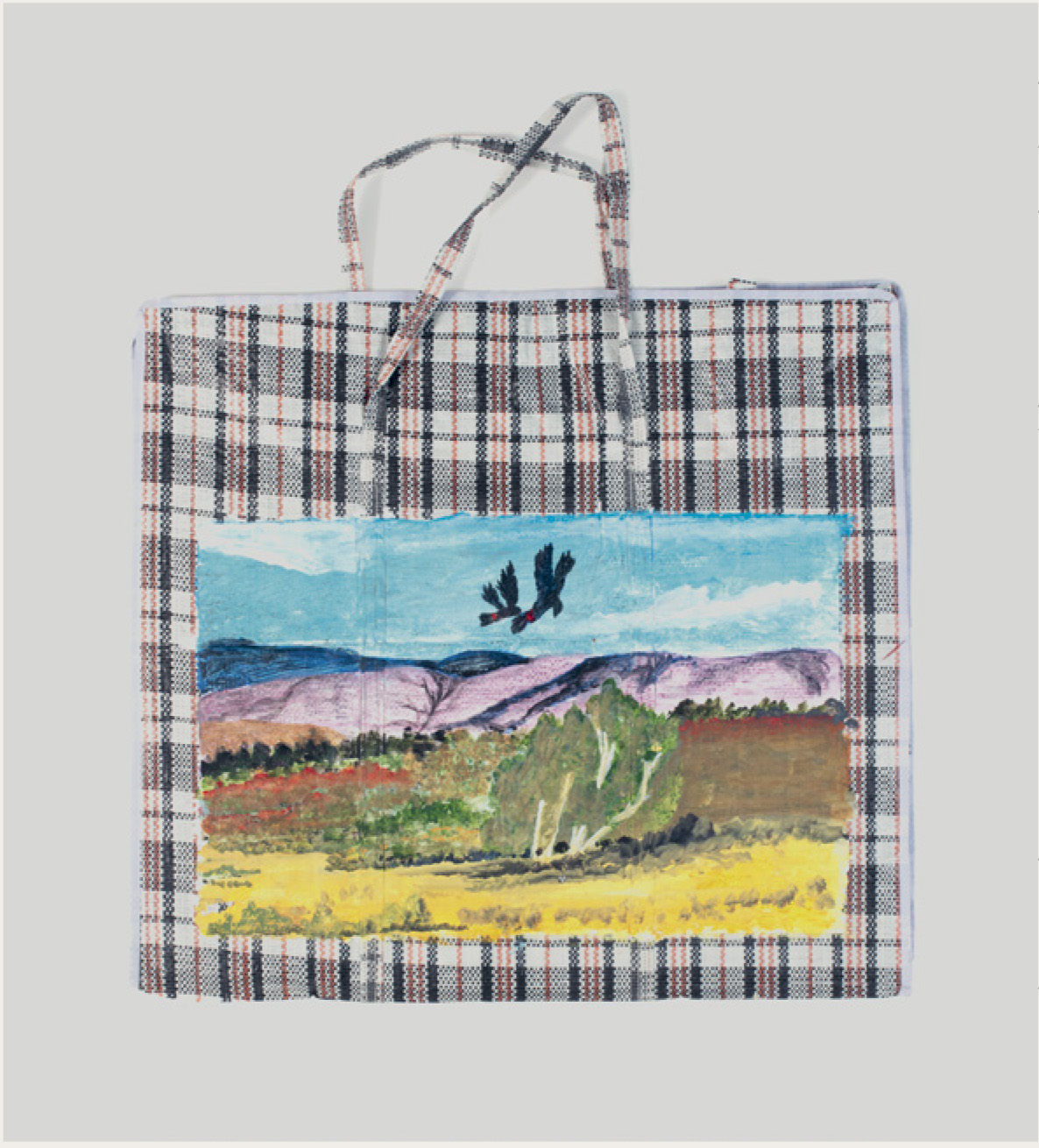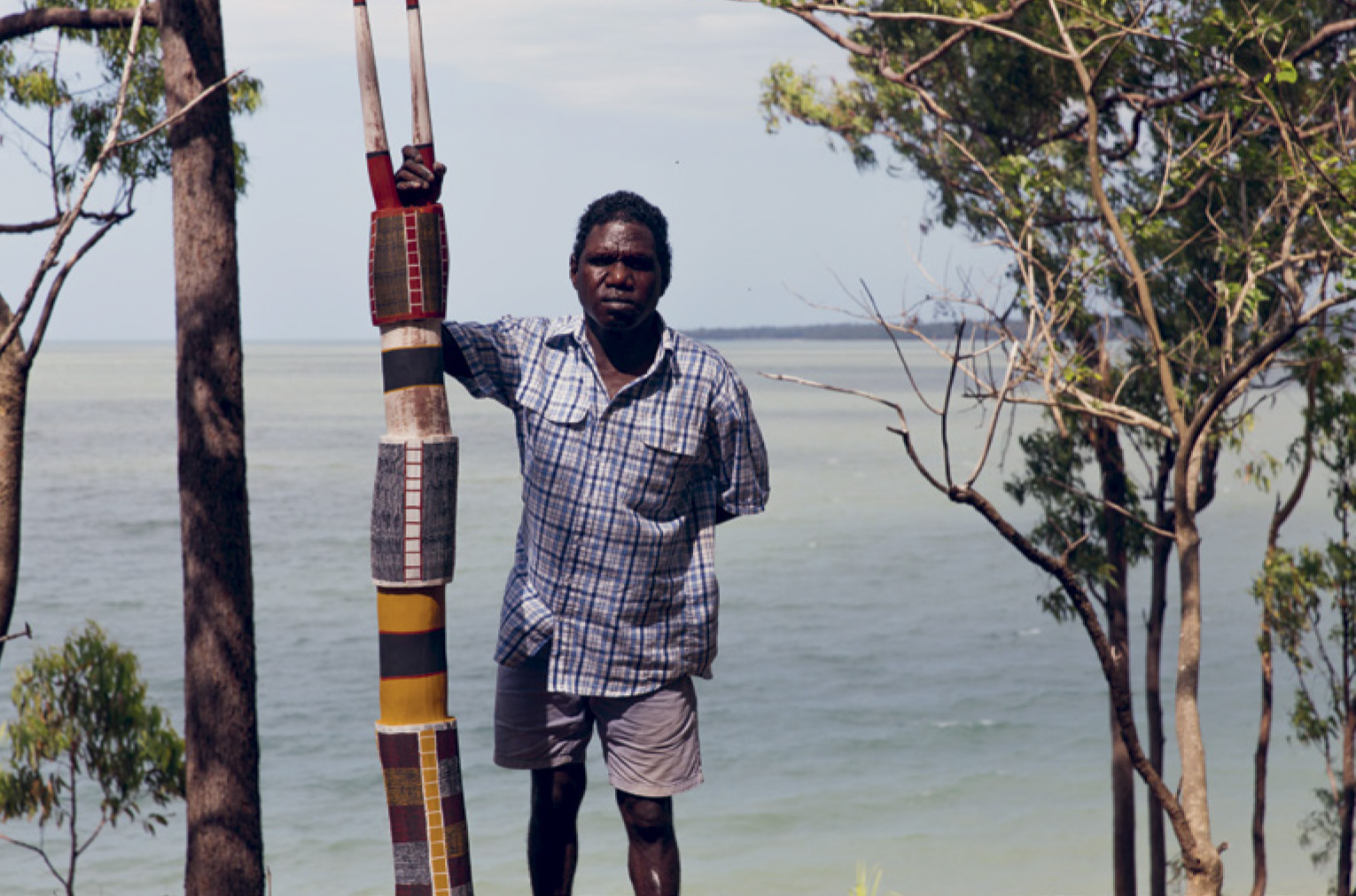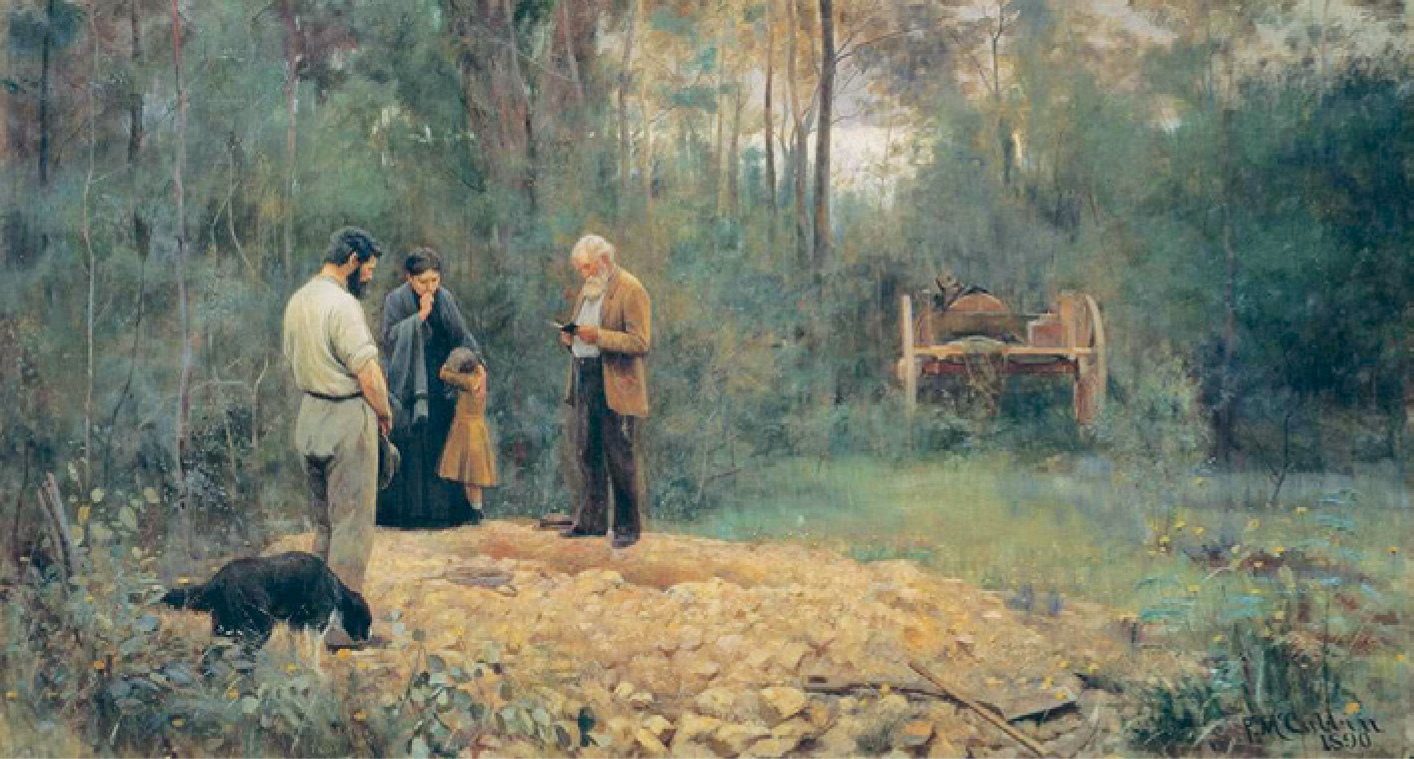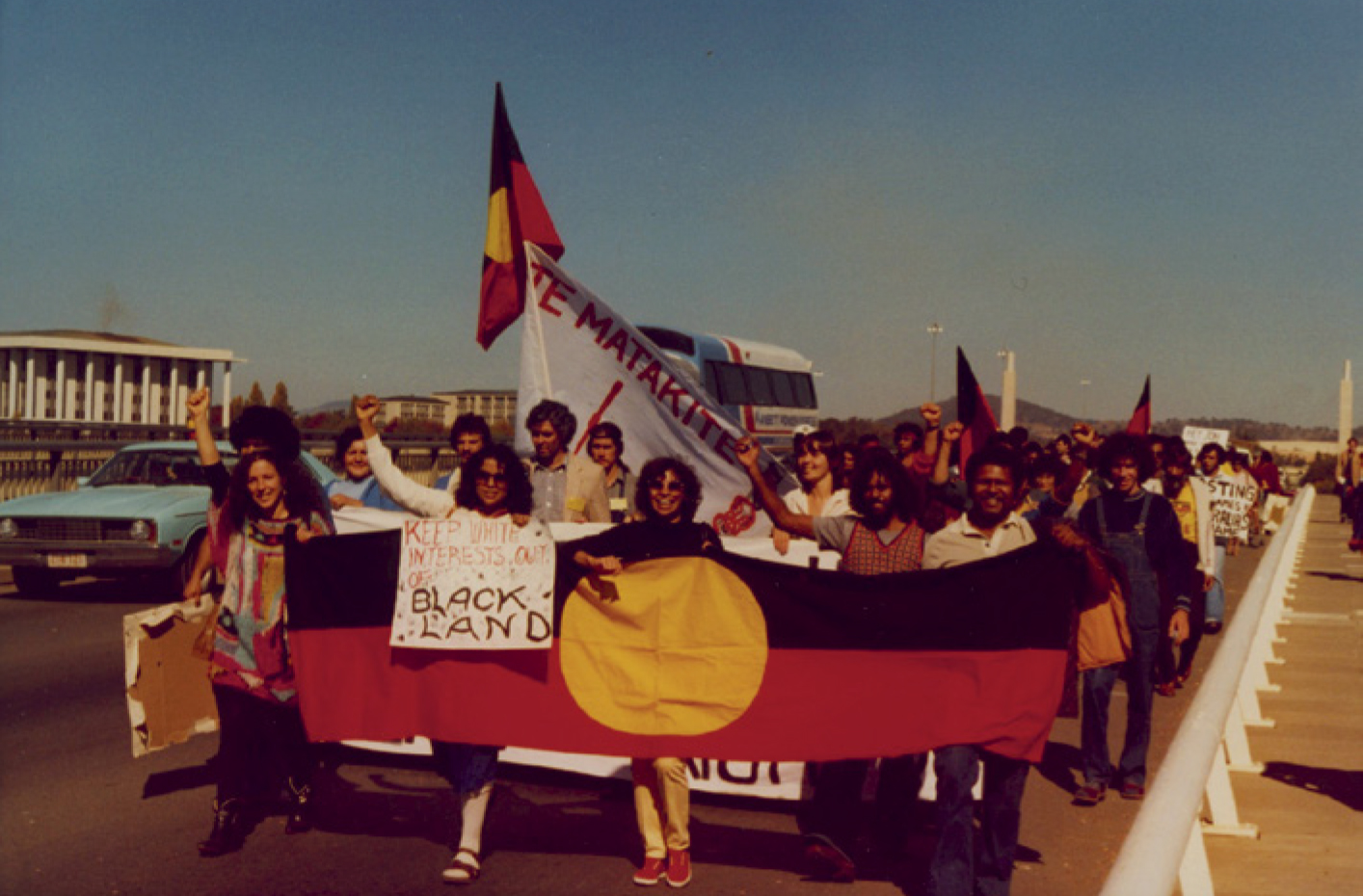Ancient Sovereignty:
Representing 65,000Years of Ancestral
Links to Land
65,000 years: the earliest establisheddate of human occupationof the Australian continent.Archaeologists reported ‘the resultsof new excavations conductedat Madjedbebe, a rock shelter in Arnhem Land, in northern Australia.’1Even though they admit that the ‘time of arrival of people in Australia is anunresolved question,’ they surmise that ‘[h]uman occupation began around65,000 years ago, with a distinctive stone tool assemblage including grindingstones, ground ochres, reflective additives and ground-edge hatchet heads. ’2By 1788, when the British arrivedto establish their penal colony,there were distinct societies acrossthe entire continent, speakinghundreds of languages and living inenvironments managed and harvestedfor food and

other wants and needsby means of a continent-wide systemof practices. The British coloniserswere not entirely blind to the factsof Aboriginal life. Early historicalrecords show an enormous varietyof economic and social lifeways andtechnologies using stone, wood, fibreand other materials to create efficienttool kits for food harvesting and landmanagement. These were developedover about 3,000 generations.
Reinhold Inkamala, My homeless country, 2019, acrylic and marker pen on nylon stripe bag, 56 x 64.5 cm.
42. Marcia Langton
The eastern part of Australiabecame a colony of England and partof the British Empire in 1770, whenLieutenant James Cook declared ita British possession at PossessionIsland in the Torres Strait Islands.It was Eddie Koiki Mabo from Mer(Murray Island) in Torres Strait who, over 200 years later, in 1982, challenged thearrogance of this imperialist declaration and the legal fiction on which it was based,winning the Mabo native title claim over Mer before the High Court of Australia.The legal fiction of the doctrine of terra nullius – the Latin legal term for ‘emptyland belonging to no-one’ and, more particularly, ungoverned – based on WilliamBlackstone’s 1765 theory of ceded colonies, held sway for those two centuries. On26 January 1788 the colony of New South Wales was established, and thereafterother parts of Australia were declared colonies, eventually totalling six in all.Aboriginal societies and their territories were overrun by settlers, and in manyparts of the continent and its islands, if they survived at all, they did so in muchreduced and horrible circumstances.
The British invasion and colonisation destroyed much of Indigenoussociety, but enough remained for people to demand recognition of their humanity,their rights and their sovereignty. These demands began soon after first contactand continue to this day. Yet, Australian law doctrine maintains that despite theestablishment of Indigenous societies governing every place on this continent andits islands across more than sixty millennia, sovereignty cannot be recognised.What is refused is the idea of Indigenous sovereignty, a claim made by Aboriginalpeople in legal cases, petitions, literature and art. It was summarily dismissedby Anthony Mason’s High Court decision in 1979 in Coe v Commonwealth:‘The contention that there is in Australia an aboriginal [sic] nation exercisingsovereignty, even of a limited kind, is quite impossible in law to maintain.’3 Thereis much to be said about the injustice of this decision and the absence of historicaland factual understanding of the ways in which Aboriginal people have governedand continue to govern their societies and territories. As Noel Pearson has argued,‘a concept of sovereignty inhered in Aboriginal groups prior to European invasioninsofar as people have concepts of having laws, land and institutions withoutinterference from outside of their society.’4
43. Marcia Langton
In Australia, the denial at law of Indigenous sovereignty and, indeed, thevery existence of Aboriginal polities, has a peculiar history. Here, the doctrineof terra nullius was applied to justify colonisation. It was the 19th century viewthat we were arrested in an evolutionary cul de sac, a tragedy of geographicaland spiritual isolation. And for many 19th century Europeans, the collapse ofAboriginal society in the wake of European colonial settlement was seen to reflectthe static nature and natural inferiority of the Aboriginal ‘race’ – rather than theresult of deliberate war, dispossession and genocide.With native title recognised by the High Court of Australia in 1992 inMabo (No 2), the issue of all other Aboriginal laws, and the idea of Aboriginal
and Torres Strait Islander sovereignty,became a live issue. How can it beexplained that native title to land thatpre-existed the narrow western ideaof sovereignty and survived it, as theHigh Court of Australia acknowledged,has been recognised, and yet the fullbody of ancestral Indigenous laws andjurisdiction are deemed by this narrow, historically distorted notion of sovereigntyto be incapable of recognition?
First, what is the notion of Indigenous sovereignty? One way to explain itis by seeing signs of it in works of art. Indigenous art plays a key role in the processof achieving recognition of Indigenous sovereignty. It provides the visual andsymbolic flesh to the dry legal bones.There is an inescapable theme
There is an inescapable theme running through much of Aboriginal andTorres Strait Islander art: homelands. They may be venerated or mourned: whetherintact and governed by traditional owners or stolen and destroyed, they remainenlivened by ancestral narratives about long-past events that saw us createdalong with other species and the earthly, watery and celestial forms in the worldaround us.
44. Marcia Langton
An exampleis Ngurrara Canvas II(1997). Measuring 8 by10 metres, the canvas isa vivid map of Ngurraracountry, painted bytraditional owners on thebanks of Lake Pirnini inthe Kimberley region in1997 and presented asevidence in the Ngurraranative title claim, lodgedin 1996. The canvas hasbeen exhibited awayfrom its country at theNational Museum of Australia and the South Australian Museum,5 and upon itssecond return to Lake Pirnini the traditional owners conducted a ceremony to‘Parnkimanu Ngurrara’ to awaken the canvas back out on Ngurrara country. Thepainting has power; the power of the ancestors and the living:

[the painting] illustrates the significant jila (springs)and jumu (soaks) across Ngurrara country, with the onlyconcession to Western mapping a depiction of the CanningStock Route. Ten years after the canvas was painted,Ngurrara were granted exclusive possession native title overapproximately 77,595 square kilometres — an area largerthan Tasmania.6
Pedro Wonaeamirri, Tutini, 2019, natural ochres on ironwood. Photograph: Will Heathcote. Courtesy the artist, Jilamara Arts and Marcia Langton 66 Craft and Alcaston Gallery, Melbourne. Copyright © Pedro Wonaeamirri.
45. Marcia Langton
In contrast to the colonial artof Australia – such as FrederickMcCubbin’s A bush burial (1890),which is included in the 22nd Biennaleof Sydney (2020), titled NIRIN –and a great deal of postcolonial art,Ngurrara Canvas II, and others like it,tells the story of the country from theperspective of its traditional owners,who have inherited its great power. This is not ‘political art’, this is not merelya statement subverting the colonial conquest narrative but, rather, a statementof Indigenous sovereigntysourced in the ancient storiesand genealogies, the songlinesand sacred narratives andplaces that are the livingrecord of the people. This istheir ‘truth-telling’, similarlyrepresented in the powerfulPitjantjatjara artworks ofKunmanara Mumu MikeWilliams and Sammy Dodd,which asserts their historical reality so long denied and distorted.

Understanding Sovereignty as the Spiritual or Ancestral Tie of Aboriginal People to Their Lands
It seems to me that the concept of sovereignty as developed in the western legaltradition to describe nation states is artificial when applied to the Aboriginalrelationship to land that is at the core of Indigenous systems.
Frederick McCubbin, A bush burial, 1890, oil on canvas.
46. Marcia Langton
A more appropriateconcept is reflected in the judgment of Judge Fouad Ammoun of the InternationalCourt of Justice in 1975 in the Western Sahara Case.7 Bayona-Ba-Meya dismissedthe materialistic concept of terra nullius, which led to the dismemberment ofAfrica following the Berlin Conference of 1885. Bayona-Ba-Meya substitutesfor this a spiritual notion, the ancestral tie between the land, or ‘mother nature’,and the man who was born therefrom, remains attached thereto, and must oneday return thither to be united with his ancestors. This link is the basis of theownership of the soil, or better, of sovereignty.8
those of us who can claim a kind of sovereignty that pre-dates the coloniststo have a sense of place that is at once deeply emotional and social and political.Bayona-Ba-Meya’s concept is cited explicitly in the Uluru Statement from theHeart, issued as a result of an historic gathering of over 250 Aboriginal and TorresStrait Islander people at the National Indigenous Constitutional Convention
in 2017, and which called for the‘establishment of a First Nations Voiceenshrined in the Constitution.’9The coexistence of ancientand pre-existing Aboriginal politiesor nations within the Australian state,and the ethical basis for their futurerecognition by formal constitutionalor legislative means, is a matter that isclose to the hearts of most Aboriginaland Torres Strait Islander people.Sovereignty, as I see it, is the legalpersonality of the Aboriginal polity –and that social complex that is sometimes called sovereignty should be recognised.But how is the question. The post-settlement history of Australia has made this adifficult problem, and so too the refusal of politicians to advocate for this issue.10
47. Marcia Langton

Internationally, the United Nations Declaration on the Rights ofIndigenous Peoples makes no reference to sovereignty, but Article 3 states that‘Indigenous peoples have the right of self-determination. By virtue of that rightthey freely determine their political status and freely pursue their economic, socialand cultural development.’11 This right may be interpreted as constituting a rightto maintain a form of sovereignty. In a similar vein, Noel Pearson has argued that‘local indigenous sovereignty could exist internally within a nation-state, providedthat the fullest rights of self-determination are accorded.’12 But it is preciselyhere that we have the problem. The Australian state has consistently failed tounderstand and to accept that the rights of its Indigenous peoples should be thefullest rights of self-determination.
Kunmanara Mumu Mike Williams at Mimili Maku Arts. Photograph: Marcia Langton 68 Rhett Hammerton. Courtesy the artist and Mimili Maku Arts.
48. Marcia Langton
Moreover, becausesovereignty is conventionally viewedas absolute power, it can be difficult toadvocate for. As Brennan, Gunn andWilliams argue, sovereignty ‘is a loadedterm precisely because it deals withultimate authority and its use is oftenwedded to a strong rhetorical purpose.By using a concept borrowed fromwestern legal and political thought,Indigenous advocates run the risk oftheir opponents selecting the mostpolitically damaging interpretationavailable, to invalidate all competinginterpretations. All the nuance can belost.’13 The classical or ‘formal’ idea ofsovereignty views it as indivisible andabsolute, and yet this concept has beenthe subject of much legal and theoretical debate.A more modern and nuanced understanding of sovereignty defines it byreference to a dichotomy between ‘internal’ and ‘external’ forms. The externaldimension defines the status of a people in relation to another people, state orempire, whereas

the internal dimension concerns the relationship between a people and‘its own’ state or government.14 According to this theory, the right ofself-determination is held by peoples, but determining their political status andeconomic, social and cultural developmenttypically involves the structure and behaviourof states and their institutions.15Classical notions of sovereigntyimagine Indigenous claims to sovereignty asdemands for secession from the Australianstate, or at least as rejecting the mainstreamrule of law.
Karla Dickens, Hard-hitting brother I, 2019, inkjet print, 120 × 80 cm, edition 8, 180 × 120 cm, edition 3. Courtesy the artist andAndrew Baker Art Dealer, Brisbane.
49. Marcia Langton
concept shifts from the dominant “statesovereignty” construct and comes toreflect more of the sense embodiedin western notions such as personalsovereignty or popular sovereignty, itwill remain problematic if integratedwithin Indigenous political struggles.’17
Formal
Recognition
of Indigenous Sovereignty
implicit in the nature of a treaty is recognition of
anothersovereignty, a nation within
Australia.Constitutional legal scholar
Cheryl Saunders18There are two key legal mechanisms by which Indigenous people seek to havetheir sovereignty recognised by the Australian state. The first is by amendingthe constitution to create a space for First Nations within the structural legalarrangements of the nation. The second is through modern treaties that woulddetail and define how those arrangements would operate at the ground levelbetween specific groups of Indigenous people and state actors
The project of constitutional reform that has been pursued by Indigenouspeople since at least the 1930s has two main aims. First, the aim of removing racismin the Australian constitution and creating a symbolic space for Indigenous peoplewithin the modern nation-state. Second, enacting substantive constitutional reformto enshrine an Indigenous voice to parliament. The latter, if done effectively, wouldovercome the extreme minority status of Indigenous people within our democracyand recognise the sovereign status of Indigenous nations.
The question of how to bring about a constitutional amendment inAustralia is another issue that remains hotly debated by Indigenous leaders. Toachieve the level of community support needed to pass such an amendment at areferendum would require bipartisan political support, which in turn would entail theneed to secure support from electorates in rural, conservative and regional Australia.
50. Marcia Langton
It is clear that, by itself, the ‘battle of ideas’ will not have the politicalforce required to bring either constitutional change or a treaty process to fruition.Nor would a moral victory lay the ground for strategic alliances and an ongoing,mutually beneficial relationship between the treating parties.
My research with Maureen Tehan and Lisa Palmer has shown that, sincethe first agreements were signed under the provisions of the Aboriginal LandRights Act (1976) in the Northern Territory more than twenty years ago, there hasbeen an astonishing proliferation of agreements between Australian Indigenouspeople and various corporations and branches of government.
These agreementshave been aimed at achieving sustainable relationships and outcomes, whetherthe matter concerns a social license to operate a mining company or for thegovernment to deliver a service.

Elle Máijá Tailfeathers, Bihtt.oš, 2014 (video still). Commissioned by the imagineNATIVE Film and Media Arts Festival. Courtesy the Marcia Langton 72 artist. Copyright © Violator Films
51. Marcia Langton
While the many attempts attreating with Aborigines in colonialtimes and in the early 20th century didnot translate into enduring outcomes, itis clear that the agreements negotiatedsince the 1970s are evidence of awillingness to do what the colonial settlers were unable to countenance. That is, toacknowledge that another group of people were the owners and custodians of thelands and waters of Australia;that their descendants have aright to possess, use and enjoythose lands and waters; thatthose descendants have a rightto govern, within the limitsof Australian law, their useand access by others; and thatthey have a right to reap anybenefits arising from that useand access by others, as wouldany other group of people inrightful possession of a place.These practical agreements settled between Indigenous and nonIndigenous parties, mostly for land use reasons, number in the many hundreds –there are possibly two thousand now – and they demonstrate that coexistence canbe achieved by formal means, such as Indigenous Land Use Agreements.
Noel Pearson puts it this way:There is surely no future in hoping the nation-states will furtherfragment, so that more nations can be created which reflect theexistential convictions of distinct peoples. The existing nationstates, jealously guarding their integrity, have no appetite forfurther fragmentation.… But it is also surely clear that nation-states denyingthe existence of distinct peoples within their territories andinsisting upon the integrity of the unitary state, withoutrecognition of distinct peoples and cultures, is no solutioneither. Insisting on comprehensive assimilation as theconcomitant of nationalism is not the recipe for unitywithin nations; it foments too much ethnic destruction andresistance.19
There is an alternative to fragmentation and the assimilatory state. It isrecognition and reconciliation: where peoples within nation-states come to termswith each other and commit to the nation, while respecting the existential anxietiesof distinct peoples.20
52. Marcia Langton
Understanding the cultural foundations of the Indigenous world is notdifficult. The first peoples of Australia have a right to exist and be acknowledged and this is the
the outstanding challengethat Australians must eventually face.
The unfinished business
of Australia’s nationhood includes this outstanding problem of recognising theancient jurisdictions of Aboriginal law, and that requires recognition of theirpolities as nations. There are several options for doing so, including a constitutionalamendment to provide such polities with the necessary status to treat withAustralian governments, private corporations and other entities for the purposesof governance and industry.
In the Australian context, it follows that outdated and unjust theories ofrace must be replaced by a recognition of the ancient jurisdictions and continuingpolity of Aboriginal nations. This must be the full meaning of Aboriginalsovereignty and this is what any future treaties with Aboriginal and Torres StraitIslander people must recognise.
First Nations people’s sovereignty needs to be formally recognised withinAustralia’s political and legal structures. It must also be recognised popularlywithin our social structures – what some refer to as mere ‘symbolism’, but whatI believe is a key element of the project. These forms of recognition are not asseparate as they might seem but are, in fact, intricately connected.
Recognition of Indigenous Sovereignty through ConstitutionalReform and Treaty-Like Agreements
The moral legitimacy of Australia as a modern state will remain at issue whilean honourable place for Indigenous Australians in the formal constitution of thenation remains unresolved. That place – one that accords the first peoples theirrightful status as the original peoples and acknowledges the need for restitution ofwhat was taken from them – must be found beyond the limits of legal frameworks.The political settlement of these issues is well overdue.I leave the last word to Henry Reynolds, who drew our attention to theabsurdity of the claim to absolute sovereignty by the High Court of Australia andby the Australian state:
53. Marcia Langton